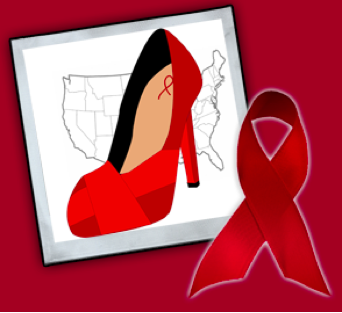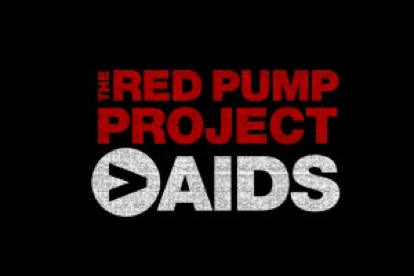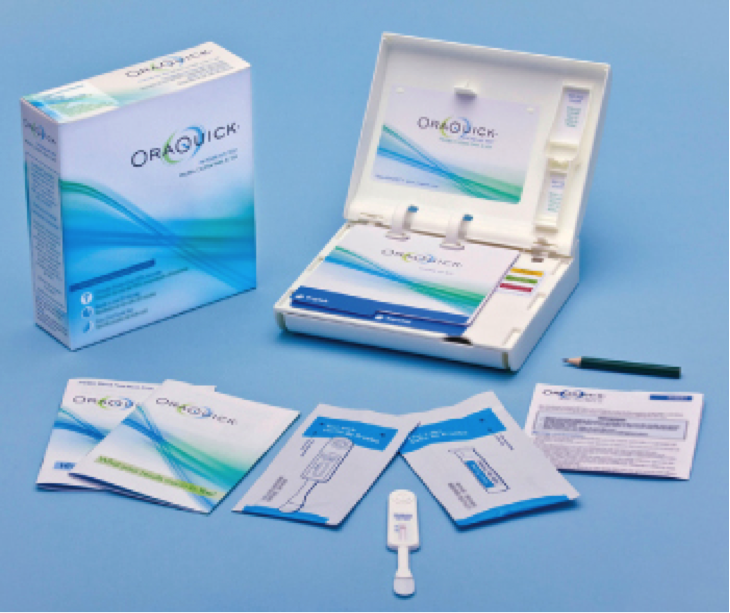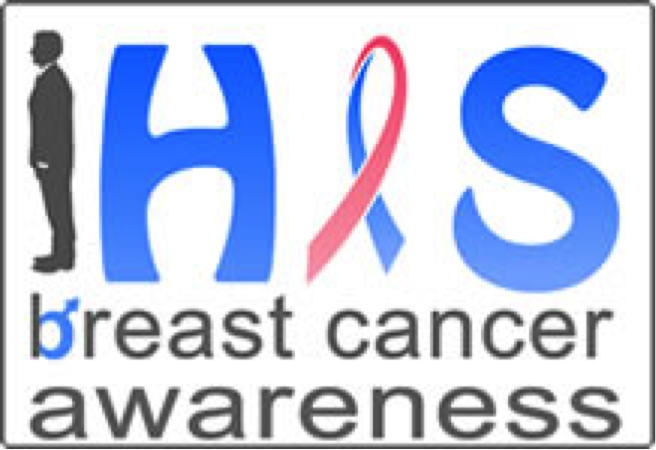myHIN Blog
Category: Health Literacy Articles

March 06, 2014
The TURN UP: Spring Break Safety
With Spring Break literally around the corner, college students everywhere, and I mean EVERYWHERE are gearing up to travel to distance and tropical places to soak up some sun and jump in the water. While most students are only concentrating on getting that last minute workout in for washboards abs or purchasing their last minute wardrobe findings, I guarantee no one is thinking about STDs!
Instead, most college students are thinking about fun, alcohol and parties. Don’t get me wrong, nothing is wrong with having fun and of course making lifetime memories, BUT be SMART about it! Don’t forget about your morals and values, or should I say “home training”. Have “responsible” fun. Yes, spring break is about having a good time and getting away from the books, but don’t be naive.
Drink Responsibly
 Personally, do yourself a favor and party smart. Pace yourself if you choose to drink, and avoid hard alcohol if you can or other drinks that are powerful and have fast effects—cause drunks make for “easy targets”.
Personally, do yourself a favor and party smart. Pace yourself if you choose to drink, and avoid hard alcohol if you can or other drinks that are powerful and have fast effects—cause drunks make for “easy targets”.
According to a study by the University of Wisconsin, 75 percent of college males and 43 percent of females reported being intoxicated on a daily basis during spring break. Which brings me to another point of discussion; don’t let alcohol blur the lines of love! There is no such thing as “I want to get to know you” or “love at first sight” during spring break! Just lust, deceitful lies, and sexual transmitted diseases! So, be smart and not STUPID!
Stay Safe: Safe Sex, Know Your Facts and Know Your Status
The only 100% sure way to prevent sexually transmitted diseases is by not having sex. If you choose to have sex with a stranger—which isn’t best idea—use something called “condoms”. We are college students, so this should not be hard. Stock up on protection before you leave home so you never find yourself in a compromised situation. If this isn’t enough for you, here are the facts: Women are more likely to be victims of sexual violence than men. Women who experience both sexual and physical abuse are significantly more likely to have sexually transmitted diseases. Take precautions and avoid situations or persons that may place you at risk for harm. Decide before even going on spring break what you’re willing to do, and then get to work setting your boundaries early and often. If you meet someone and decide to shack up, be up front with him or her if sex isn’t in the plan. Maybe something like, “Hey good lookin’. I’ve had fun this evening, but no sex tonight.” But seriously, don’t ever let anyone talk you into doing something you’re uncomfortable with.
Keep Safe and Hang With Your Friends
Lastly, “if you go out with your friends, go home with your friends.” It’s one of those things that keeps you a whole lot safer, and eliminates the bad, ugly, and stupid drama. This way you can look out for one another, and get a friend home who is too intoxicated to be out. So this spring break, think a little bit before you act! I’m sure that one week of fun is not worth your life! Don’t turn up too much, so that you look like a fool!
Share

March 06, 2014
Are Sexual Transmitted Diseases (STD’s) still a taboo subject?
Sexually Transmitted Diseases, STDs, have become a topic of discussion that many people feel uncomfortable talking about and try not to think about them, hoping they will go away. As of now there are more than 25 diseases that are transmitted sexually. The organisms, which can cause these diseases usually, enter the body through mucous membranes—such as the surfaces of the vagina, urethra, anus, and mouth.
Listing of Common STDs
How are Sexual Transmitted Diseases (STDs) Caught?
Sexually transmitted diseases can be caught through intimate contact with someone who is infected, especially during oral, anal, or vaginal sex. However, some infections are also transmitted nonsexually. Sexually active college-age men and women are at the highest risk for contracting STDs. With that said, it is important for college students to use protection and get tested regularly.
Symptoms of STDs can be unnoticeable and can lead to more issues if not treated. As adults, it is our responsibility to stay educated on the topic of STDs and continue to utilize health institutions for help and guidance.
If that isn’t enough motivation for you, below are some examples of STDs and images of their effects. I hope this information gives you the courage to help spread the awareness of this issue and practice safe sex, as well as, getting tested.
Pictures of Common STDs




Share

February 27, 2014
Condoms Don’t Protect From Everything
Some people think they know everything there is to know about sexually transmitted diseases. The possibility of catching gonorrhea, syphilis, or even HIV is a scary thought- but some have that perception that they won’t catch anything. Maybe you wear condoms during sexual intercourse so you think that you’re good and have nothing to worry about, right? Well, I must inform you that condoms don’t protect from everything. Even some of the most elite individuals in society are walking around with sexually transmitted diseases. Yes- this is not a joke.
Did You Know Condoms Have a Fail Rate?
Statistics show that condoms have an annual 11% fail rate. Not so safe as you imagined after all… Even when condoms are used, they do not fully protect from sexually transmitted diseases that are passed by skin-to-skin contact. Just this statement alone opens the door for many diseases to walk in and take residence in your body if you are not careful.
Here are some tips you can use in order to lower your risk of catching an STD:
1. Get Tested. Use STD Testing to Know Your Status!
This may sound like an obvious answer but there are still so many people who do not know their std status. I will admit that you fear what you do not know. Having a close friend to go get tested with you can help eliminate that fear you have. That “what if” question will continue to linger until you make the decision to know you status for yourself. We have a specific area on the myHealthImpact website where you can type in your zip code and you will be informed of testing locations that are close to you.
2: Know the Safe Sex Facts For Yourself
There are so many resources available that will provide information on safe sex and sexually transmitted diseases. Saying that you were not informed anymore can no longer be an excuse. Sometimes you have to take the initiative to seek out information for yourself. Ultimately, how can you inform someone about STDs if you don’t know about them yourself?
3. Abstinence.
This is something that the younger generation doesn’t hear a lot about anymore. The media is constantly portraying sex in advertisements, song lyrics and online which makes it seem acceptable. Remaining abstinent until marriage is the only way you will be able to know your status for sure. You don’t run the risk of catching a sexually transmitted disease or early parenthood. This may seem challenging but it is possible. Make a promise to yourself that you will honor and protect your body. Anytime you find yourself being tempted, remember that promise you made to yourself. It will be worth the wait for that special someone.

These diseases are REAL people. While all sexually transmitted diseases don’t lead to death, some of them do. Whether you continue to have sex before marriage or wait until marriage is totally up to you. Whatever you decide, I encourage you to be safe. While condoms do protect from some STDs, they don’t protect from everything. Just keep that in mind.
Share

December 12, 2013
The Key to Getting Tested.. HIV/Aids Awareness
I never knew that I had an interest in HIV/AIDS awareness and informing my community until my friend, Julian, and I went to get tested. If I could briefly remind and reminisce on that moment, we went to get tested on a Friday afternoon, most of the time campus is pretty deserted on Fridays, as it was on this day. We went into the room where the testing was being provided, and I could literally count on one and a half hands how many people I saw coming to get tested. Though I was still caught up in my own nerves, I was saddened and actually amazed that that room was not overflowing of people. To this day, I am still unable to fully understand why it wasn’t full of people. From that day, I decided that it is my goal to encourage people to get tested and to care about their sexual health.

I decided to go with one of my close friends here on campus but it’s absolutely nothing wrong with taking someone you don’t know that well; your suitemate, a co-worker, or even a study buddy. Take who makes you feel comfortable and if that’s someone you just know in passing, do it. It isn’t so much about whom you take with you but actually going and having that moral support. In my opinion, taking someone with you to go get tested alleviates the stress that comes with the whole situation. You have someone with you that shares some of the exact same feelings, from excited to scared and from nervous to even anxious. It’s ok to be scared momentarily together but in the end you’ll be aware of your status together.
Going with someone helps combat the stigma behind going to get tested for HIV and other STDs. You’re showing yourself and your testing buddy that it’s perfectly fine and normal to get tested. Go get tested. Break the walls of this stigma with a testing buddy.
Share

December 05, 2013
The Road to the Red Pump
This month makes six months that I’ve been onboard the myHealthImpact team. Thus far, it has been a very enjoyable experience and it truly feels like a family. MyHealthImpact will be attending the Red Pump Project. This project raises awareness regarding HIV/AIDS and its impact on females. Red Pump’s mission is to “promote HIV prevention through education, and open dialogue about the issues that surround sexual and reproductive health”.
While the color red is associated with energy, confidence, action and vitality, this aligns with The Red Pumps concept of empowerment for women.  On the road to Red Pump, the myHealthImpact team will document our journey and experiences. With the mixture of personalities that are currently on the team, I know that we are bound to have a memorable time. Our team will be actively involved in the Red Pump event, so be on the look out for our videos, tweets, pics and blogs. Though this event is geared around women, the HIV/AIDS epidemic has affected both genders tremendously. As a male. I do believe that I will be able to benefit from attending this event on behalf of myHealthImpact. Increasing your knowledge base is always a positive aspect to one’s role in developing as an individual.
On the road to Red Pump, the myHealthImpact team will document our journey and experiences. With the mixture of personalities that are currently on the team, I know that we are bound to have a memorable time. Our team will be actively involved in the Red Pump event, so be on the look out for our videos, tweets, pics and blogs. Though this event is geared around women, the HIV/AIDS epidemic has affected both genders tremendously. As a male. I do believe that I will be able to benefit from attending this event on behalf of myHealthImpact. Increasing your knowledge base is always a positive aspect to one’s role in developing as an individual.
Spreading the information to others not only help those who don’t know but can potentially save lives. Preparation for this event ties into this month’s  focus, which is HIV Awareness and World AIDS Day (December 1). The spreading of diseases can be prevented, and more events can be hosted to inform the community of the disease. This event is going to be amazing, and I’m looking forward to it. Be on the lookout for the video footage and other information pertaining to myHealthImpact’s involvement with the Red Pump Project.
focus, which is HIV Awareness and World AIDS Day (December 1). The spreading of diseases can be prevented, and more events can be hosted to inform the community of the disease. This event is going to be amazing, and I’m looking forward to it. Be on the lookout for the video footage and other information pertaining to myHealthImpact’s involvement with the Red Pump Project.
Share

November 03, 2013
Did You Know…
Did you know that in-home HIV testing was possible and readily available to the public, inexpensively? Well it is, with OraQuick. I’ve noticed (upon my own personal observation) many people are ashamed and just don’t want to be seen getting tested. OraQuick completely solves that issue.

OraQuick is an in-home testing mechanism testing for HIV-1 and HIV-2. Being that it’s in-home, you don’t have to worry about confidentiality or anonymity being broken. The only person/people you’d have to worry about knowing your results are you, yourself…and well just you.
A couple of facts via www.oraquick.com concerning OraQuick:
- OraQuick is the first FDA-approved oral swab in-home test
- This is based on the same HIV test that healthcare professionals have used since 2004
- You get results in 20 minutes
- Being that this is an oral test, no blood is involved. You just swipe you gums
- Your test kit includes: step-by-step directions, an oral swab test stick and tube with solution, information booklets on HIV and testing, and package insert containing information about the test
You can purchase your OraQuick kit on its website as well as at some of your local health supply stores such as Rite Aid, CVS, Walgreens and even Wal-Mart as well as Kroger. Purchasing via the OraQuick website, it’s $39.99 (not including shipping and handling). Purchasing at Rite Aid would run you about $29.99.
I stress the importance of getting tested because it’s important and at that readily available. I feel as though it’s no excuse to have not been tested especially if you haven’t ever or your test results are invalid. College organizations are offering FREE testing, many clinics are offering FREE testing, and if you don’t want to do either, you can do so right in your own home for a fee that’s incomparable to knowing your status.
Share

October 21, 2013
Breast Cancer: Study Results, Causes, and Health Literacy
When thinking about breast cancer, many people automatically shift their focus to women. In particular, women within the African American community. Studies have shown that breast cancer is more common in white women than African American women. In all actuality, men are also susceptible to breast cancer. Just like women, men do have breast tissue, which has the possibility of developing breast cancer.
I was pretty surprised when I learned of this news. From my research, the exact cause of breast cancer is not known. Even though there is no exact cause, the risk of getting breast cancer increases with age. Factors such as family history and alcohol usage also increase the possibility of getting breast cancer. For males, the most cases for breast cancer have been detected between ages 60- 70. Overall, a male’s risk of obtaining breast cancer is only 1%. Though this percentage is fairly low, this doesn’t completely eliminate the possibility for men.
In terms of health literacy, everyone needs to be knowledgeable about breast cancer. Having this knowledge base can help improve the quality of life by recognizing the signs early and seeking treatment if necessary. Knowing that breast cancer is 100 times more likely in women than men, this encourages me to consistently check on the women in my life. It is my duty to ensure that they are going to get mammograms and maintaining a healthy lifestyle. Just knowing about breast cancer isn’t enough. Being proactive in your efforts can help save lives.

Follow us on Tumblr tumblr.myhealthimpactnetwork.org
Follow us on Twitter @myhealthimpact
Share
In Partnership with: Poole College of Management, College of Humanities and Social Sciences, National Science Foundation, Penn State
Take Action, Get Tested: Find Your Local Testing Center Why Get Tested?
